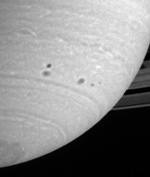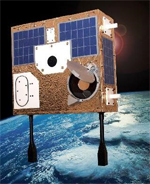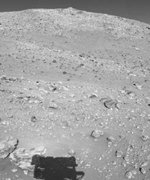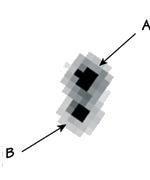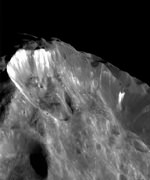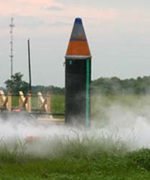
Image credit: Armadillo Aerospace
The new actuator covers worked out great. We made these by hand, but we also finally got around to getting a sheet metal roll / brake / shear for the shop to make this type of thing easier in the future.
http://media.armadilloaerospace.com/2004_06_15/newCovers.jpg
There was intermittent rain around Dallas today, but we decided to head out to our test site and hope for the best anyway. We taped over all the exposed holes in the vehicle, but it turned out that we only caught a few drops on the way over, and the test site was fine. Since we had a test out there only two and a half weeks ago, we already had some of the gear ready, and we didn?t forget anything this time. We had the vehicle loaded up and ready to go within 30 minutes of arriving.
http://media.armadilloaerospace.com/2004_06_15/loading.jpg
We pressurized the tank to 300 psi, which is a little high for the threaded end closures on these tanks, and we could hear a small pressure leak as the O-ring unloaded a bit.
The engine warmed up predictably, adding further evidence for the benefit of a compressed hot catalyst pack (although we did lose some thrust after compressing it). Something that we noticed this time was that there was still some cloudiness in the exhaust while I brought it up to temperature, but after it had sat for a couple seconds before I started it back up again for the launch it was completely clear. It is likely that there is some path that was channeling enough propellant to self cool at steady state, but after letting it heat soak a bit from the surrounding catalyst, it was uniformly at operating temperature. We can probably use this effect to shorten our warm-ups by warming for a few seconds, then pausing for a couple seconds.
http://media.armadilloaerospace.com/2004_06_15/warming.jpg
I changed the liftoff procedure slightly, opening the valve to the warmup level and holding it there while engaging the boost command. Previously, I would warm the engine, then let it shut completely down for an inertial reset, then just engage boost mode, which pushes the throttle open as fast as it can. This lets more propellant flow into the engine than it would get if there was already chamber pressure, resulting in a brief period of higher than normal thrust and stress. This was quite noticeable in the test on Saturday, which had a momentary kick of nearly one G. Boosting from warmup made the flow completely predictable.
The flight parameters were set for 1.8 seconds of boost, -4 m/s^2 minimum acceleration (slightly more than negative one half G) during the stabilization phase, 3 m/s^2 acceleration in the landing phase, 1 m/s target touchdown velocity, and a 3 m uncertainty margin for the GPS altitude. I increased the minimum acceleration during stabilization because of concerns about throttling the ball valve at small open fractions and low chamber pressures. This wastes more propellant during the flight, but this vehicle can carry so much more propellant than we can use without our burn time waiver that it doesn?t really matter.
The flight was perfect. It went 131 feet high, and landed less than one foot from the launch point.
http://media.armadilloaerospace.com/2004_06_15/perfectBoostedHop.mpg
Analyzing the telemetry told us the following:
This engine didn?t run as well at full throttle with the increased pressure, giving an acceleration during the wide-open-throttle that cycled from 15 to 20 m/s^2. We really need to build a brand new engine to replace this one that has been cut open and modified a half dozen times.
The acceleration prediction that I added to smooth out the hunt-for-acceleration modes helped the stabilize mode, but not as much as it smoothed out the hovering in the test on Saturday. You can clearly hear the pulsations in the flight video. This is understandable, because the flow curve is changing faster at the lower ball valve opening. I should be able to either increase the acceleration prediction, or slow down the ball valve movement at smaller openings. I also realized that I can develop this on the test stand, because hunt-for-chamber-pressure will be effectively the same thing as hunt-for-acceleration on a vehicle.
We knew our chamber pressure signal was messed up, so we didn?t get that in the data logs this time. When we got back to the shop we investigated, and found that the porous pressure snubber in front of the transducer was blocked up. We had this happen once before on a test stand transducer, so we are going to change up from 1 micron to 7 micron filter size. A little bit of peroxide probably starts enough surface corrosion on the 303 SS to clog it up.
The auto-land worked perfectly. I had tried several algorithms on the simulator before settling on this one, and it behaved exactly the same in reality, which is always a pleasant surprise.
We were planning on doing more tests, but the burn time on the first one was 14 seconds, so we really didn?t have much room under the 15 second burn time limit. I could have trimmed the stabilization acceleration and GPS uncertainty, but risking the vehicle to go another 50 feet higher didn?t seem worthwhile, and we called it a day.
http://media.armadilloaerospace.com/2004_06_15/groupPhoto.jpg (Neil, Phil, Tommy, John Carmack, Russ, John Carr, Matt) Joseph was sick today, and James teaches class on Tuesday nights, so they missed it?
We have about 25 hops on this set of jet vanes now, and they have taken on an interesting coloration pattern:
http://media.armadilloaerospace.com/2004_06_15/jetVanes.jpg
We probably won?t fly this vehicle again until we build a completely fresh engine and develop the low throttle hunting algorithm a bit more, but we are submitting some changes to our burn time waiver request to allow us to do initial flights with the small vehicle before flying the big one. It can easily do flights three times as long, which may show up some problems before we hit them with the big vehicle. If the big engine isn?t burned from the leaking valve problem, we should have the big vehicle hovering under the lift this Saturday, so we may be out next Tuesday doing a boosted hop with it.
Speaking of next week? I think Space Ship One has good odds of success in the single-person-to-100km flight. I only see two real issues they may hit: The extended burn above the atmosphere may run into some control issues as the nozzle ablates, which will be hard to correct with only cold gas attitude jets. This would be a fairly benign failure, with the pilot just shutting off the main engine if he can?t hold the trajectory. The dangerous part of the test will be the reentry with a significantly bigger drop than the previous test. At this point, I hope Burt has everything work out and he is able to make the X-Prize flights soon, because our prospects are pretty dim for getting everything working perfectly in the big vehicle in five months and having permission to fly it. I certainly don?t want the insurance company to keep the prize money. If Space Ship One crashes, we will probably throw ourselves at an attempt, but it will be a long shot. No, I don?t think any of the other teams are close.
Original Source: Armadillo Status Report

